Introduction – 10 Top Benefits of Kurmasana (Tortoise Pose) | Step-by-Step Instructions of Kurmasana (Tortoise Pose)
Kurmasana, commonly known as Tortoise Pose, is an advanced yoga asana that embodies strength, flexibility, and introspection. The Sanskrit name “Kurmasana” is derived from two words: “Kurma,” meaning tortoise, and “Asana,” meaning pose. In this posture, practitioners assume a seated position, then proceed to encase themselves in a rounded shape resembling the protective shell of a tortoise. The pose involves intricate elements of flexibility in the hips, shoulders, and spine, as well as significant engagement of the core muscles.
Table of Contents
The Yogic Philosophy of The Kurmasana (Tortoise Pose)
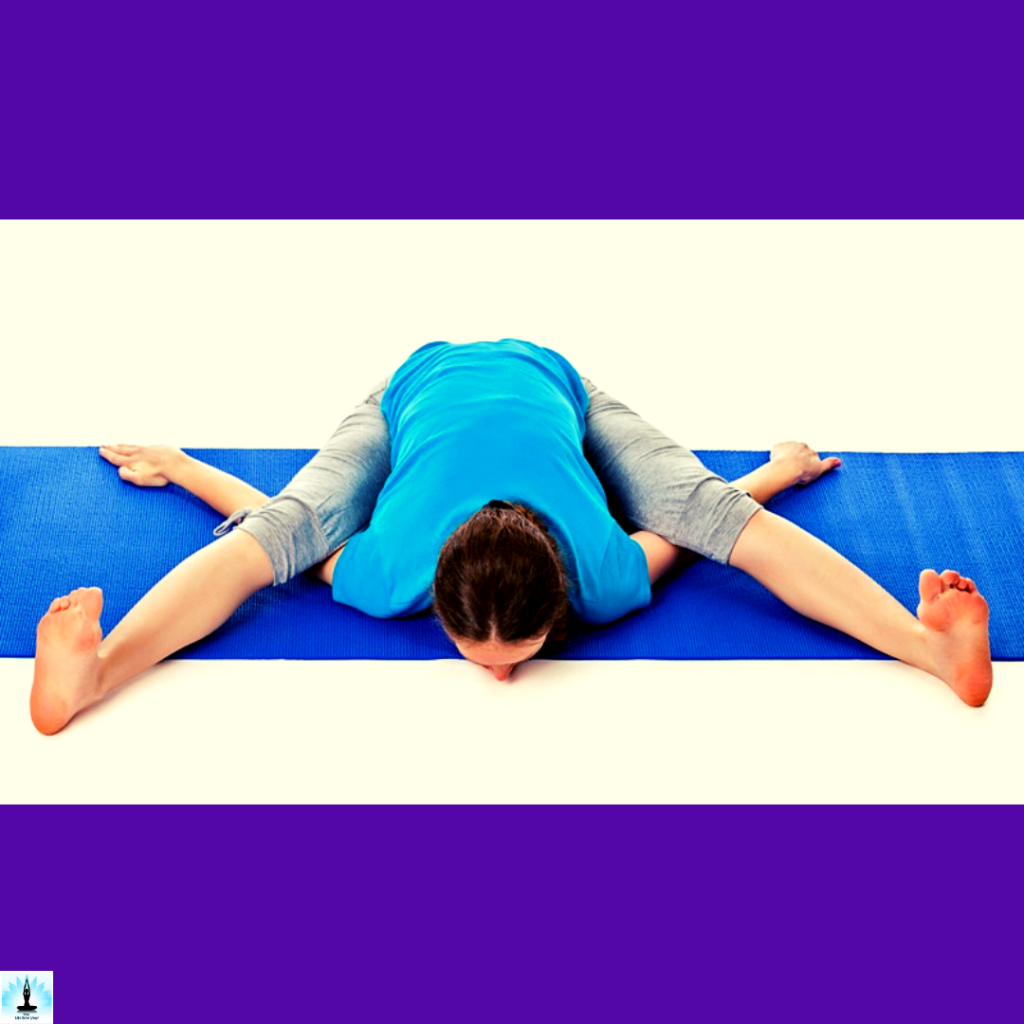
In the realm of yogic philosophy, Kurmasana, or Tortoise Pose, represents a profound integration of physical postures with spiritual principles. The pose embodies the qualities of the tortoise, emphasizing the need for a balance between protective withdrawal and courageous engagement with the external world. Kurmasana encourages practitioners to cultivate a sense of inner reflection and resilience, drawing parallels with the tortoise retreating into its shell for protection.
Which Chakra is Activated by Practicing Kurmasana (Tortoise Pose)
The Swadhisthana Chakra is situated in the pelvic region, near the sacrum, and is associated with creativity, emotions, and the flow of energy related to pleasure and sensuality.
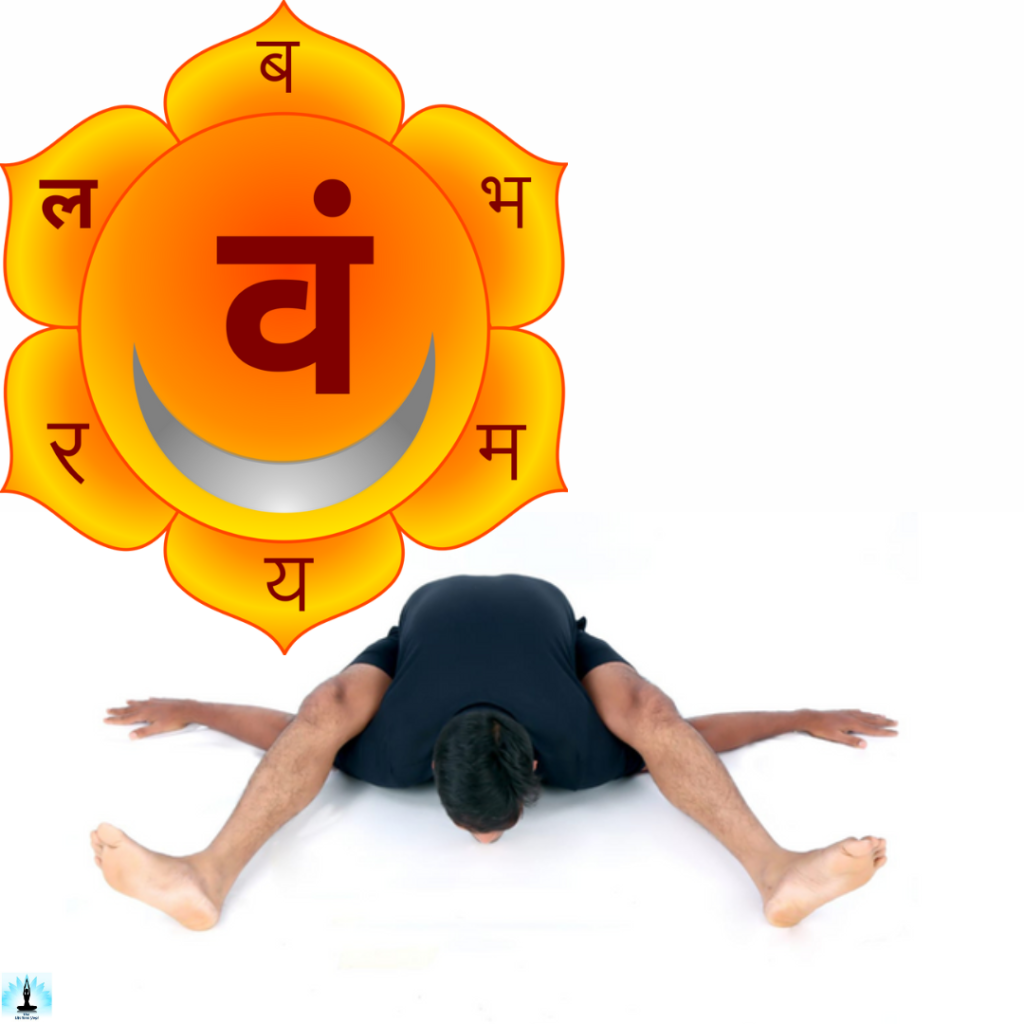
The practice of Kurmasana, with its focus on hip opening and engagement of the pelvic area, is thought to awaken and balance the energy associated with the Swadhisthana Chakra.
Activation of this chakra enhance emotional well-being, creativity, and the ability to experience joy and pleasure in life.
Top Benefits of Kurmasana (Tortoise Pose)

Hip Flexibility:
Kurmasana involves a deep stretch in the hips, promoting flexibility in the hip joints and groin area.
Shoulder Opening:
The pose requires clasping the hands behind the back, leading to a stretch in the shoulders and upper back, improving mobility.
Spinal Flexibility:
Kurmasana encourages flexibility along the entire length of the spine, fostering a supple and resilient back.
Core Strength:
The pose engages the core muscles significantly, contributing to abdominal strength and stability.
Stress Reduction:
Kurmasana’s forward-bending position has a calming effect on the nervous system, promoting relaxation and stress reduction.
Improved Posture:
Regular practice of Kurmasana helps strengthen the back muscles, enhancing overall posture and alignment.
Abdominal Organs Stimulation:
The compression in the abdominal region stimulates and massages the internal organs, potentially benefiting digestive health.
Balanced Energy Flow:
The activation of the Swadhisthana Chakra balance energy related to creativity, emotions, and pleasure.
Pelvic Floor Strength:
The pose targets the pelvic floor muscles, contributing to increased strength and stability in this area.
Preparation for Advanced Asanas:
Kurmasana serves as preparation for more advanced yoga poses, requiring a combination of strength, flexibility, and mindfulness.
Step-by-Step Instructions of Kurmasana (Tortoise Pose)
Starting Position:
Begin in a seated position with your legs extended in front of you. Sit tall, engaging your core muscles.
Hip Opening:
Bend your knees and bring your feet closer to your pelvis. Allow your knees to drop outward, creating an opening in the hips.
Clasping Hands:
Slide your right hand under your right knee and your left hand under your left knee. Clasp your hands behind your back.
Forward Fold:
Inhale deeply, lengthening your spine. Exhale and start to hinge at your hips, folding forward between your legs.
Head to the Floor:
Continue the forward bend, bringing your forehead toward the floor. Extend your arms overhead, keeping them straight.
Encasing Yourself:
Gradually, work on encasing yourself in the posture by bringing your knees towards your shoulders and your forehead closer to the ground.
Maintain the Clasp:
Keep the clasp of your hands intact behind your back, maintaining the stretch in the shoulders and opening in the chest.
Breathing:
Breathe deeply and slowly in the pose, feeling the expansion of the ribcage and the stretch along the spine.
Hold the Pose:
Hold Kurmasana for a comfortable duration, gradually working toward an extended stay as your flexibility improves.
Exiting the Pose:
To release, engage your core muscles, slowly lift your head, and return to an upright seated position.
Tips:
- If unable to clasp hands, use a yoga strap or belt between your hands to facilitate the stretch.
- Work on hip flexibility through hip-opening poses before attempting Kurmasana.
- Focus on the breath and allow the body to surrender into the pose with each exhale.
Advance Variations of Kurmasana (Tortoise Pose)
Supta Kurmasana (Reclining Tortoise Pose):
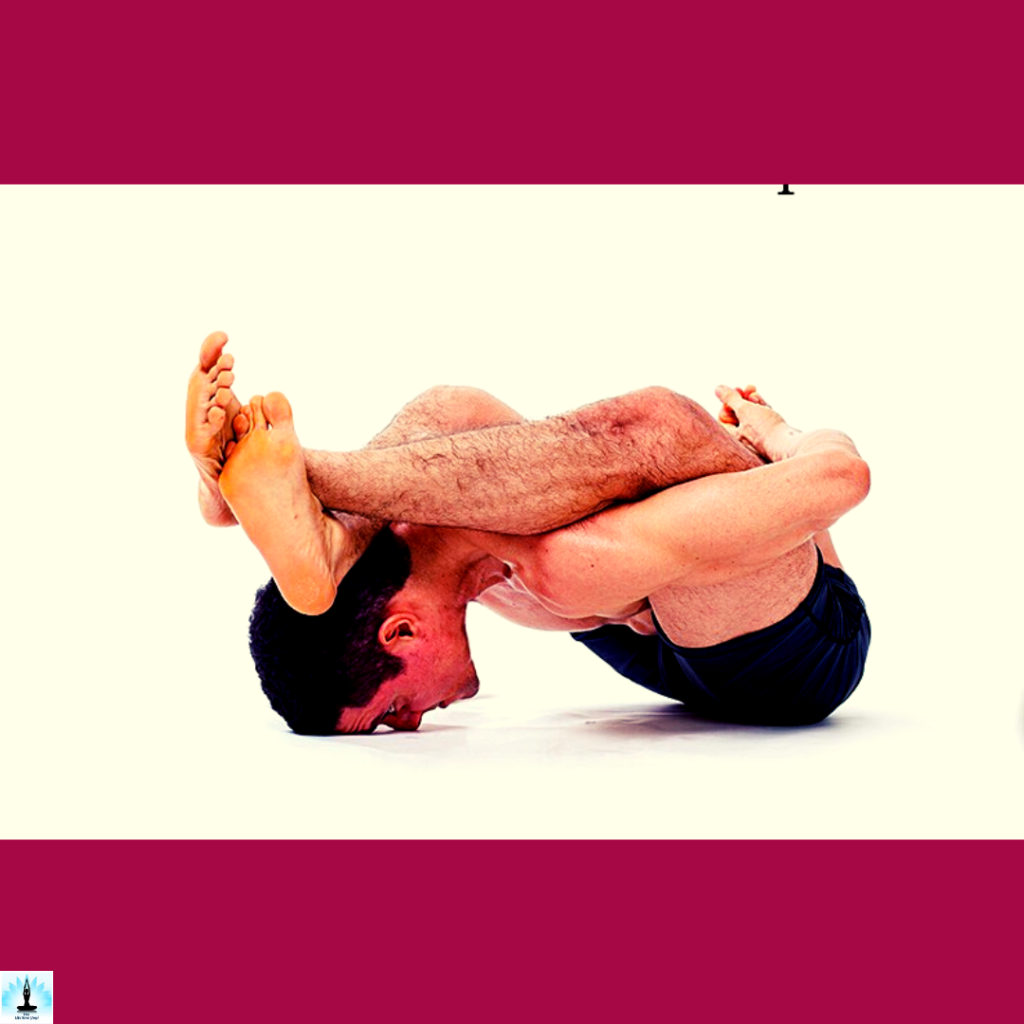
Supta Kurmasana takes Kurmasana to an advanced level by transitioning into a reclined position. In this variation, practitioners recline backward, bringing the legs overhead and extending them straight. The arms remain clasped behind the back, and the spine is fully rounded. Supta Kurmasana demands greater flexibility and strength, particularly in the shoulders and spine.
Therapeutic Applications of Kurmasana (Tortoise Pose)
Kurmasana offers various therapeutic applications, contributing to both physical and mental well-being. The pose is known for its capacity to stretch and open the hips, shoulders, and spine, promoting flexibility and relieving tension in these areas.
Kurmasana engages and strengthens the abdominal muscles, enhancing core stability. The forward bend aspect of the pose has a calming effect on the nervous system, making it beneficial for stress reduction.
Poses Related to Kurmasana (Tortoise Pose)
Preparatory Poses of Kurmasana
Baddha Konasana (Bound Angle Pose):
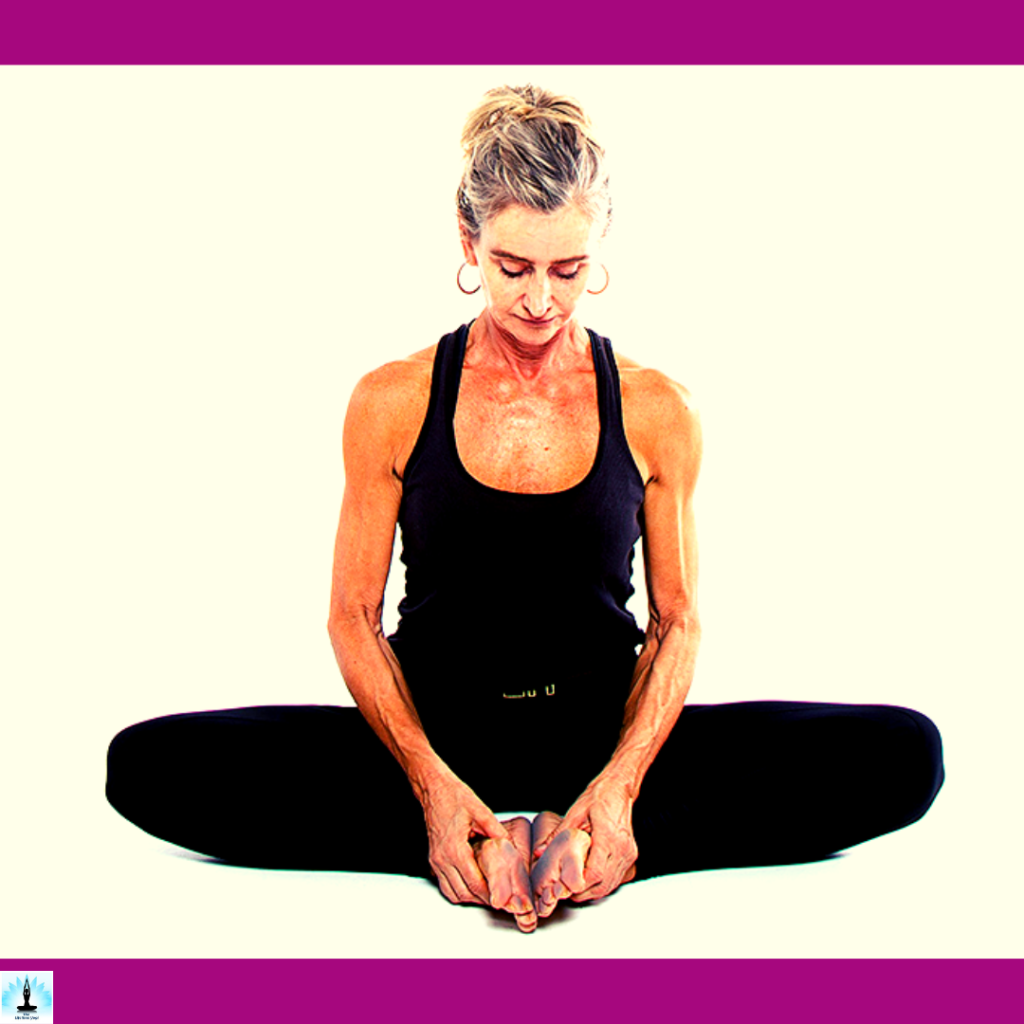
Baddha Konasana, or Bound Angle Pose, is a preparatory pose that helps open the hips and groins. This seated pose involves bringing the soles of the feet together, allowing the knees to drop outward. Practicing Baddha Konasana before Kurmasana helps enhance hip flexibility, a key element in achieving the rounded shape of the tortoise pose.
Gomukhasana (Cow Face Pose):
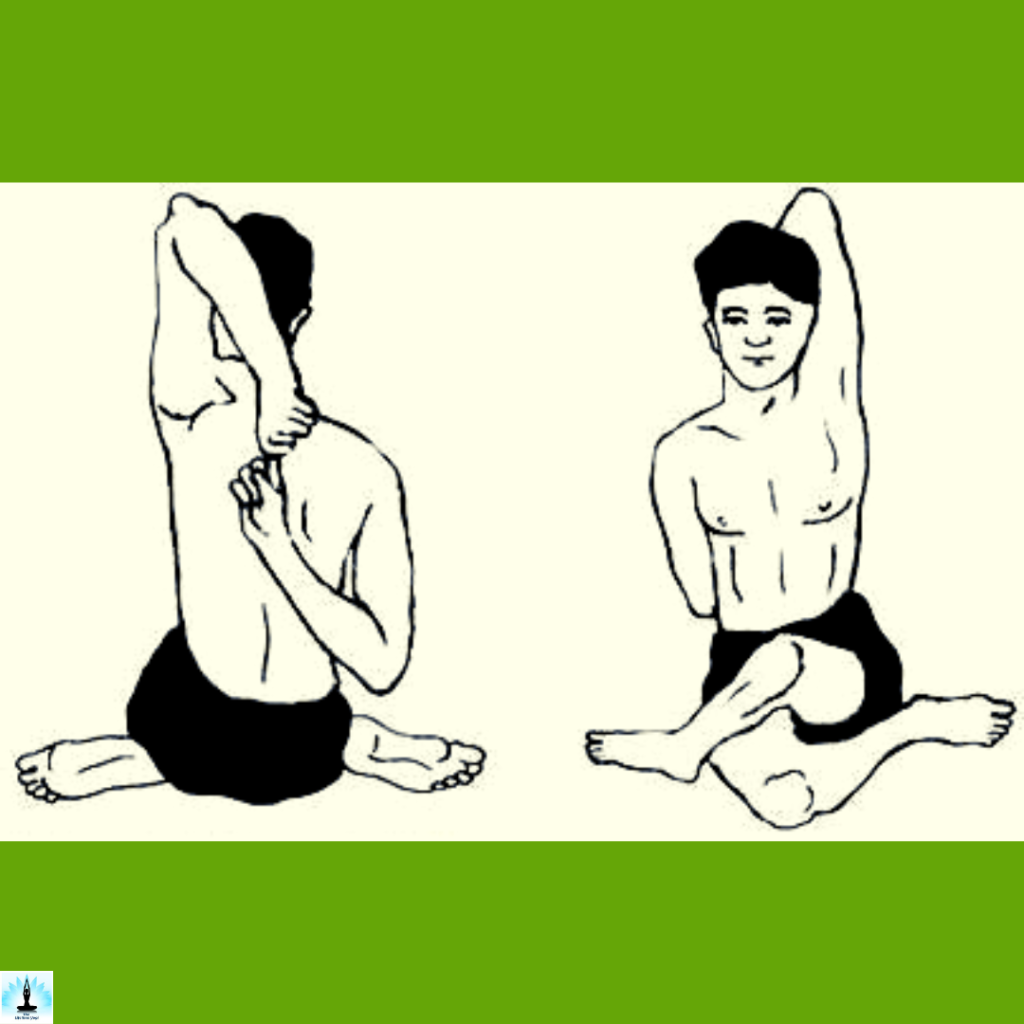
Gomukhasana is beneficial for stretching the shoulders and creating flexibility in the upper back. By practicing this pose, which involves clasping the hands behind the back, practitioners can prepare the shoulders for the unique arm positioning required in Kurmasana. Gomukhasana also encourages openness in the chest, facilitating a smoother transition into the tortoise pose.
Follow-up Poses of Kurmasana
Urdhva Mukha Svanasana (Upward-Facing Dog Pose):
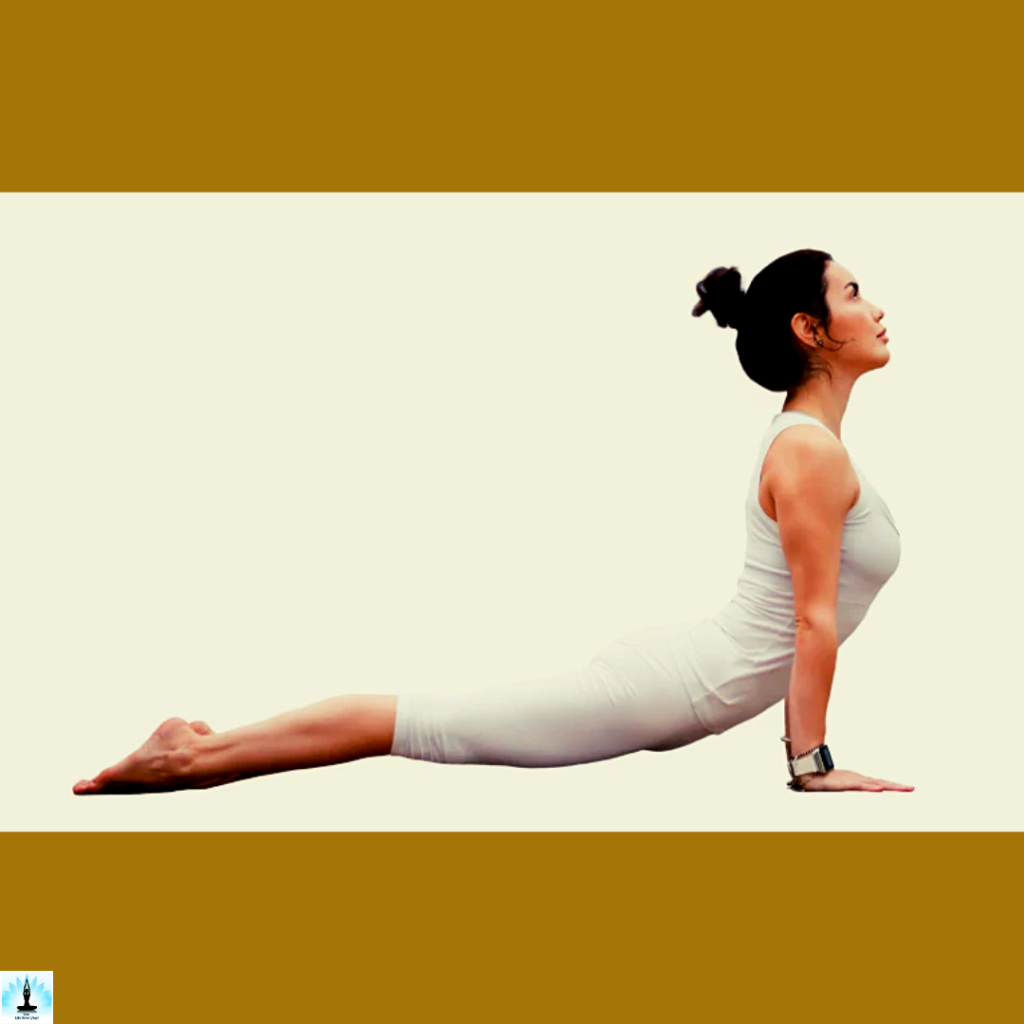
Following Kurmasana, practitioners can transition into Urdhva Mukha Svanasana to counterbalance the forward bend. Upward-Facing Dog involves lifting the chest, engaging the back muscles, and arching the spine. This pose helps extend the spine in the opposite direction, providing a complementary stretch and promoting flexibility.
Salabhasana (Locust Pose):
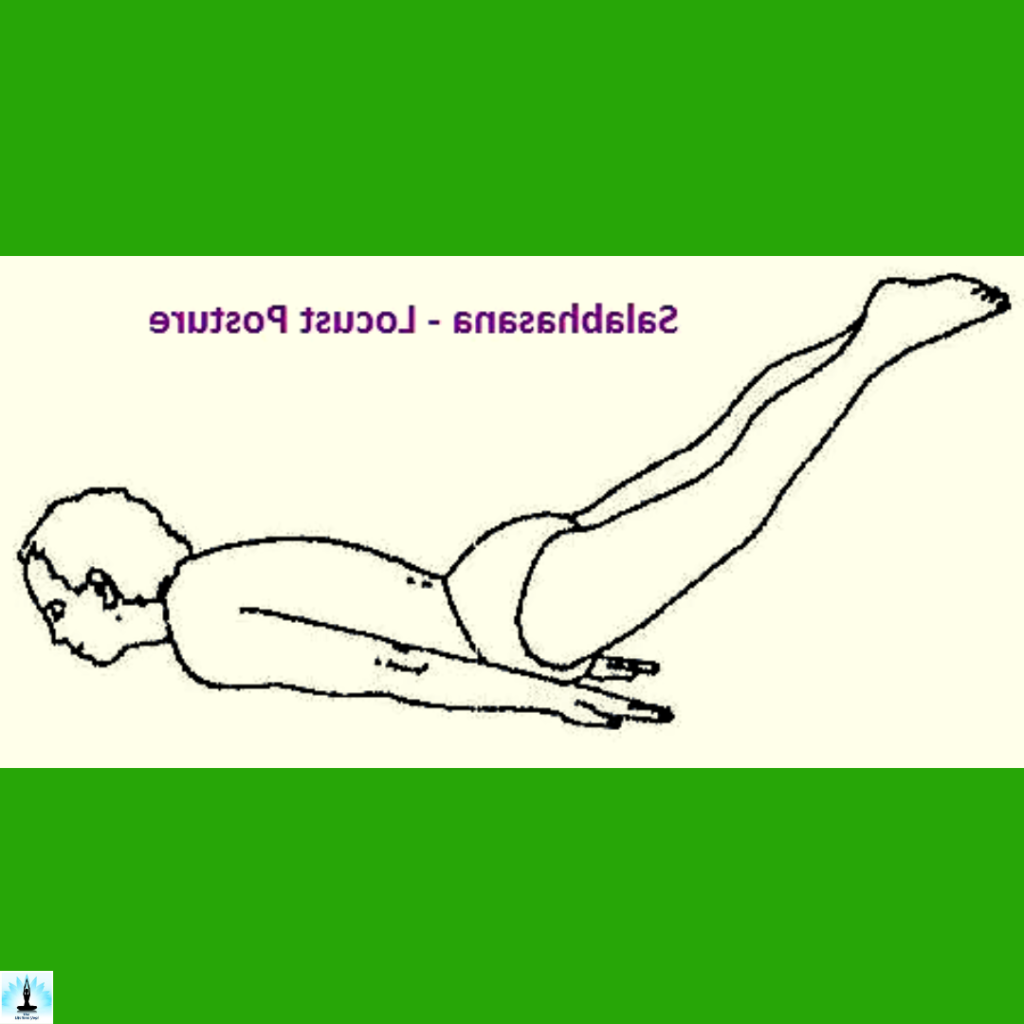
Salabhasana is a beneficial follow-up pose that targets the back muscles and strengthens the entire spine. By lifting the legs and upper body off the ground, practitioners engage the muscles along the back, contributing to improved posture and overall spinal health. Salabhasana provides a backbend element, balancing the forward bend of Kurmasana.
Beginner’s Tip of Kurmasana (Tortoise Pose)
For beginners approaching Kurmasana, it’s essential to focus on gradual progression and mindful exploration. Begin by warming up the body with hip-opening and shoulder-stretching exercises.
Practice seated forward bends to prepare the spine for the rounded shape of Kurmasana. As you move into the pose, prioritize the alignment of the pelvis and engage the core muscles to support the lower back. Initially, it may be challenging to achieve the full expression of the pose, so use props like blocks or a folded blanket to provide support.
Contraindications and Cautions of Kurmasana (Tortoise Pose)
Individuals with wrist, shoulder, or hip injuries should approach the pose cautiously and consider modifications. People with lower back issues, such as herniated discs or sciatica, should avoid or modify Kurmasana to prevent exacerbating their condition. Pregnant women should also refrain from practicing Kurmasana, especially in the later stages of pregnancy, due to the pressure on the abdomen.
FAQ’s on Kurmasana (Tortoise Pose)
Q: What is Kurmasana?
A: Kurmasana, or Tortoise Pose, is a yoga asana where practitioners fold forward while seated, resembling the shape of a tortoise. It involves hip opening, shoulder stretching, and a forward bend.
Q: Is Kurmasana Suitable for Beginners?
A: Kurmasana is an advanced pose, and beginners are advised to approach it with caution. It requires significant flexibility and strength. Beginners can start with preparatory poses and gradually progress.
Q: What Are the Benefits of Kurmasana?
A: Kurmasana offers benefits such as improved hip and shoulder flexibility, enhanced spinal mobility, stress reduction, and increased core strength. It activates the Swadhisthana Chakra, associated with creativity and emotions.
Q: Can Kurmasana Be Modified for Those with Limitations?
A: Yes, Kurmasana can be modified using props like blocks or straps. Individuals with wrist, shoulder, or hip issues should exercise caution and consider modifications.
Q: Is Kurmasana Safe During Pregnancy?
A: Pregnant women should avoid Kurmasana due to the deep forward bend and pressure on the abdomen. It’s advisable to choose prenatal yoga poses that are safe for pregnancy.
Q: How Can One Progress in Kurmasana?
A: Progress in Kurmasana comes with consistent practice, focusing on hip and shoulder flexibility. Preparatory poses and patience in the journey will contribute to gradual advancement.
Q: Are There Any Contraindications for Kurmasana?
A: Individuals with wrist, shoulder, or hip injuries should approach Kurmasana with caution. Those with lower back issues, such as herniated discs, should avoid or modify the pose. Consultation with a healthcare professional is recommended for specific health concerns.
Q: What Is the Significance of The Swadhisthana Chakra in Kurmasana?
A: Kurmasana activates the Swadhisthana Chakra, associated with emotions and creativity. This activation is thought to bring balance to these aspects of one’s life.
Q: How Long Should One Hold Kurmasana?
A: The duration varies for individuals. Beginners may start with a few breaths and gradually increase. Advanced practitioners may hold the pose for a more extended period. Listening to the body is crucial.
Q: Can Kurmasana Be Part of a Meditation Practice?
A: Yes, Kurmasana’s forward-bending nature and focus on breath make it conducive to a meditative state. Practitioners can use the pose as a means to enhance mindfulness and inner reflection.
Conclusion
In conclusion, Kurmasana, the Tortoise Pose, stands as a testament to the profound integration of physical and spiritual elements within the practice of yoga. As practitioners embark on the journey into the intricate folds of this advanced asana, they delve into the realms of strength, flexibility, and inner reflection. Kurmasana not only nurtures physical benefits, such as heightened hip and shoulder flexibility, core strength, and spinal mobility but also serves as a doorway to the deeper aspects of the yogic path.
References
- Sjoman 1999, pp. 81, Plate 15 (pose 85).
- Iyengar 1979, pp. 288–291.
- Saraswati 1996, p. 328.
- Gray 2008, p. 59.
- Ramaswami & Krishnamacharya 2005, p. 77.
- Sinha, S. C. (1996). Dictionary of Philosophy. Anmol Publications. p. 18. ISBN 978-81-7041-293-9.
- Mallinson, James (9 December 2011). “A Response to Mark Singleton’s Yoga Body by James Mallinson”. Retrieved 4 January 2019. revised from American Academy of Religions conference, San Francisco, 19 November 2011.
